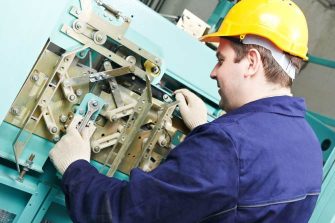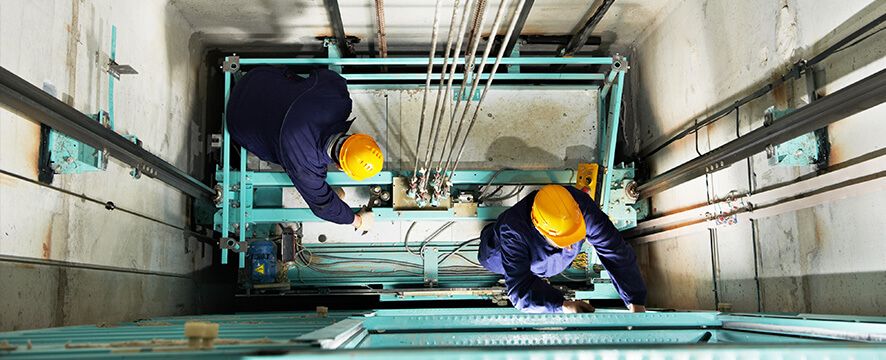Recognizing System Lift Dimensions: Important for Reliable Lift Service
Recognizing System Lift Dimensions: Important for Reliable Lift Service
Blog Article
An Extensive Technique to Enhancing Efficiency Via Strategic Lift Repair Service Methods
In the realm of facility management, the performance and integrity of lifts play a crucial role in ensuring smooth procedures. A tactical and organized technique to raise repair service and upkeep is necessary to make the most of efficiency and minimize downtime. By dealing with usual lift concerns, implementing positive upkeep measures, and establishing targeted repair service strategies, centers can optimize their lift systems to run at peak efficiency degrees. Nonetheless, the secret to accomplishing sustained renovation lies in making use of data-driven understandings to inform decision-making procedures and drive constant enhancement. This extensive strategy to improving lift performance via calculated repair strategies holds the pledge of not only boosting operational effectiveness however also extending the lifespan of lift systems.
Significance of Lift Efficiency Optimization
Comprehending the importance of maximizing lift performance is crucial for making sure effective and reliable upright transportation systems in various buildings and structures. Lifts are vital parts of modern-day infrastructure, supplying vertical mobility for owners and products within buildings of differing heights. By maximizing lift performance, structure owners and center managers can boost user experience, enhance energy performance, and increase total functional performance.
Reliable lift performance optimization involves various elements, consisting of rate, ability, energy safety and security, consumption, and upkeep demands. Effectively maximized lifts can decrease wait times for customers, specifically in high-traffic buildings, leading to boosted complete satisfaction and productivity. Furthermore, maximized lifts add to energy cost savings by utilizing innovative control systems and technologies that reduce power intake without jeopardizing performance.

Identifying Common Lift Issues
Determining typical lift concerns is essential for preserving the operational effectiveness and safety and security of upright transport systems in structures. Acknowledging these problems can assist prevent malfunctions, decrease downtime, and prolong the life-span of the lift equipment. One common issue that building supervisors and maintenance groups frequently run into is uneven or jerky activities throughout operation. This issue can be a sign of issues with the lift's electric motor, control system, or perhaps the positioning of the lift auto.
An additional prevalent lift issue is unusual sounds emanating from the lift shaft or machinery area. These noises can range from grinding or scraping noises to loud clunking sounds, all of which may signal underlying mechanical issues that call for immediate focus. In addition, regular door breakdowns, such as doors closed or closing appropriately, can interfere with the smooth flow of guests and posture safety and security risks.
Implementing Aggressive Maintenance Procedures
To enhance the efficiency and longevity of lift systems, positive upkeep measures play an important role in making certain operational reliability and safety and why not try this out security. platform lift dimensions. Carrying out proactive maintenance includes methodically evaluating, servicing, and fixing components before they fail, therefore avoiding expensive downtime and potential safety dangers. Consistently set up evaluations can assist identify minor concerns before they intensify right into major problems, inevitably extending the lifespan of lift systems
One key element of positive upkeep is producing an in-depth upkeep timetable based upon maker referrals and industry finest techniques. This routine should outline jobs such as lubrication, positioning checks, and element replacements at defined periods. In addition, carrying out problem tracking techniques, such as vibration analysis and thermal imaging, can assist spot very early indicators of wear or malfunction.
Moreover, training upkeep staff on proper examination strategies and preventative upkeep treatments is necessary for the effective implementation of positive maintenance procedures. By promoting a culture of proactive maintenance within an organization, lift systems can operate at peak performance levels, lessening disruptions and making certain the security of users.
Creating Targeted Repair Work Strategies
Upon assessing the upkeep records and performance data, the design group can create targeted repair service strategies to address particular issues and enhance lift system performance. These repair work strategies are customized to the identified troubles, ensuring that resources are concentrated on fixing important problems effectively. By prioritizing repairs based on their influence on efficiency and safety and security, the targeted fixing strategies aid reduce downtime and upkeep expenses while making best use of the lift system's dependability.
Establishing these strategies entails a detailed analysis of the lift system parts, consisting of motors, cable televisions, brakes, and control systems. With this in-depth analysis, the design team can identify the root triggers of any type of breakdowns or degradation in efficiency. This details is then made use of to produce a roadmap for the repair service process, detailing the necessary actions, timeline, and resources required to address each concern properly.
In addition, targeted fixing strategies might consist of preventative measures to enhance the lift system's longevity and performance. By proactively resolving potential problems prior to they rise, these strategies contribute to the general efficiency and safety and security of the lift system.
Utilizing Data-Driven Insights
Using the power of data-driven insights is vital check out this site in maximizing lift system efficiency and maintenance efficiency. By leveraging data analytics, lift drivers can make enlightened choices that result in boosted operational efficiency and price savings. Via the evaluation of historical efficiency patterns, data and patterns can be identified, making it possible for anticipating upkeep techniques to be executed. These anticipating maintenance methods assist prevent unexpected break downs, lower downtime, and prolong the lifespan of lift systems.

Final Thought
Finally, enhancing lift efficiency is crucial for making certain efficiency and safety and security in buildings. By determining usual lift concerns, implementing positive maintenance steps, developing targeted fixing strategies, and using data-driven insights, organizations can enhance performance and lessen downtime. It is very important to take a comprehensive strategy to lift repair approaches to take full advantage you can try here of functional efficiency and make certain the durability of lift systems.
By attending to typical lift problems, applying proactive upkeep procedures, and creating targeted repair work plans, centers can maximize their lift systems to run at peak performance degrees.Another prevalent lift concern is weird sounds originating from the lift shaft or machinery area.Upon analyzing the maintenance documents and efficiency information, the engineering team can develop targeted fixing strategies to address specific issues and enhance lift system functionality. By focusing on fixings based on their influence on efficiency and safety, the targeted fixing strategies aid reduce downtime and maintenance expenses while taking full advantage of the lift system's dependability.
It is crucial to take a comprehensive technique to lift repair service strategies to optimize operational efficiency and make certain the long life of lift systems.
Report this page